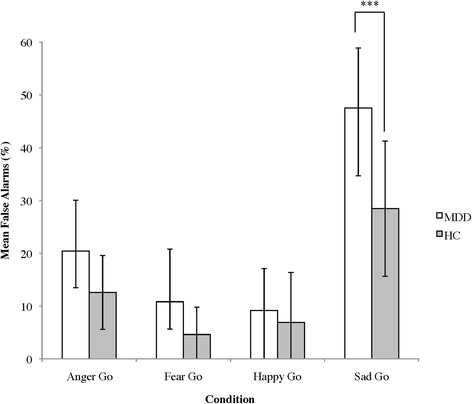Cortical thickness and emotion processing in young adults with mild to moderate depression: a preliminary study
- PMID: 26911621
- PMCID: PMC4765096
- DOI: 10.1186/s12888-016-0750-8
Cortical thickness and emotion processing in young adults with mild to moderate depression: a preliminary study
Abstract
Background: Major depressive disorder (MDD) is a multifaceted illness involving cognitive, emotional, and structural brain changes; illness onset typically occurs in adolescence or young adulthood. Cortical thickness modulations may underlie, or accompany, functional brain activity changes in the prefrontal cortex (PFC) during emotional processing that tend to be observed in MDD.
Methods: Thirteen unmedicated young adults with mild to moderate MDD, aged 18-24, completed a facial expression Go/No Go task and underwent a magnetic resonance imaging (MRI) scan to assess cortical thickness. Cortical thickness and performance on the Go/No Go task was also assessed in age-matched healthy comparison subjects (HCs; N = 14).
Results: Participants with depression had thicker left pars opercularis cortices than HCs. They also exhibited impaired response inhibition to neutral faces when responding only to sad faces, and a faster response time overall.
Conclusions: Though our sample size is limited, this pilot study nevertheless provides evidence for cortical thickening in left frontal brain regions in a non-severely depressed, young adult group compared to healthy controls. There was also evidence of disturbances in emotion processing in this group.
Figures


References
Publication types
MeSH terms
LinkOut - more resources
Full Text Sources
Other Literature Sources
Miscellaneous

